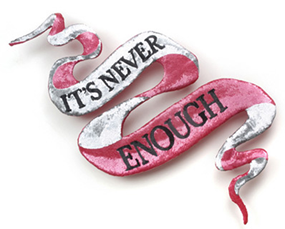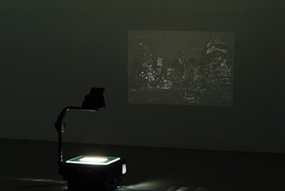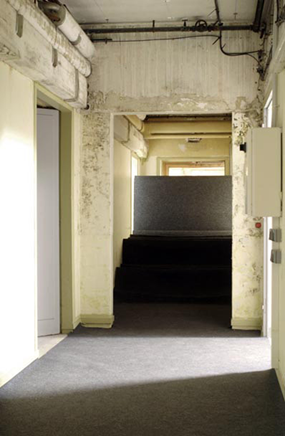By Nedko Solakov
We invited Nedko Solakov to present artists in whose works he is interested particularily. Nedko prepared his first German retrospective in the Kunstmuseum Bonn. Some of the following texts are written by himself, for two others he invited the curator Vladiya Mihaylova and the critic Nadia Timova from Sofia.

Courtesy the artist & Galeria Aizpuru
Cristina Lucas
I saw a video by Christina Lucas for the first time at the Istanbul Biennial 2007. Pantone is a spectacular piece: an animation of political world maps that shows the »development« of the world from 500 BC until today. All the kingdoms and states that ever existed appear and disappear, come together and divide again. It is a hypnotic experience to relive the history of mankind in this way. Recently I saw her wickedly sweet »male« and »female« maps of Europe at the Museum for Contemporary art in Roverto: Feminine Europe, Masculine Europe (2007). One sees the terms for reproductive organs in each respective language, thus clarifying the borders of each country (with buffer zones where neighbouring countries use »dirty words« for each other) in a singular, seemly vivid, and no less legitimate way. It was refreshingly charming. I have never met the artist in person, I just like her work. *1973 Jaén, Spain, lives in Madrid and Amsterdam

Courtesy the artist, Goodman Gallery
Frances Goodman
Frances Goodman is based in Johannesburg. She is one of the best young storytellers I have encountered in the last few years. She manages to tell a story in such an ambiguous way that one hardly can say if the »moral« of the story is a good/proper one or just the opposite. Visually the works vary from beautifully made objects (with a not-so-nice content) like the Toilet Graffiti Embroideries (2007), or wall sculptures like the Banner Series(2007), to complicated sound installations that revolve around the relationship between human and house pet, a girl and her pop idol, and around observations of daily conduct or personal memories or stories. A master storyteller from the farthest tip of Africa. *1975 in Johannesburg, lives in Johannesburg
Ante Timmermans
Perhaps one of the best young artists making drawings today. I still remember the magic experience I had when entering the dark room of his #2 (2006). There was a slightly old-fashioned overhead projector that projected an almost black, barely visible Gotham-like city on the wall, with giant buildings and tiny lit-up windows. An amazing atmosphere; one had the feeling that this is it – the city of the future and the past at the same time. Out of curiosity I went closer to the projector to see what the source material for this city could be and I was surprised. On the glass glowed a classical drawing in graphite, of no-less-power than the projection, done on an a bit of dirty »old« looking paper, presenting a landscape like one done by Peter Brueghel The Elder’s followers. And then, upon close inspection, I finally understood the trick and saw the little pinpricked holes on the landscape the projector’s light coming through them and realized that the hills and valleys on the paper became the uncanny masses of urban scenery. *1976 in Ninove, Belgium. Lives in Zurich
Vikenti Komitski
He is from the youngest generation of artists in Bulgaria that grew up in a time when the processes of globalization affected the whole structure of society and the new perspectives of the information age started to create new social networks. The gap between the old education system and real life was big enough to sweep the classrooms clean and to have the students know more as their teachers. Loss of orientation, hanging around on the street, and parties are the themes of Komitski’s works. He makes a number of sketches, drawings and small paintings, often with short texts, that resemble the scrawling on school desks or public toilets. Sometimes he uses old manuals or maps that he paints over almost completely with black paint or colourful decorative elements. In Frame (2008) he replaces the canvas with paving stones, thus subtly questioning the art institution and the status of the artwork. Images without memories and broken toys are the themes of his objects, as in the sculpture It doesn’t help to be too smart (2008) exhibited recently in Sofia. (Vladiya Mihaylova, curator, Sofia)*1983 in Sofia, lives in Sofia

Rada Boukova
In Délits (Offences) (2007) there is a long corridor with a dark felt carpet that folds onto itself toward the end. The installation reproduces a three-dimensional model of crime rate in the form of a dark, threatening wave. When the observer walks on the carpet it is altogether possible that he trips, thus accidentally forming another fold in the silhouette. Délits is laconic, rational, perhaps dark, but it is at the same time strangely sensual. Rada does not rely on direct provocation but categorically shares its spirit. The intimacy in her installations relaxes and emotionally charges the viewer, stimulating the freedom of response. The artist often finds a particularly distant way to interlace a perverse, and in some details, absurd, moment into the entire story. (Nadia Timova, art critic, Sofia) *1973 in Sofia. Lives in Paris.NEDKO SOLAKOV, born 1957 in Bulgaria. Solo exhibitions in PS1 New York (2001), in Rooseum, Malmo, the Reina Sofia, Madrid (2003) the OK Centrum in Linz (2004), and participations in the Venice Biennial (2007) and documenta 12. His retrospective Emotions opened at the end of September in the Kunstmuseum Bonn. He lives in Sofia, Bulgaria.
